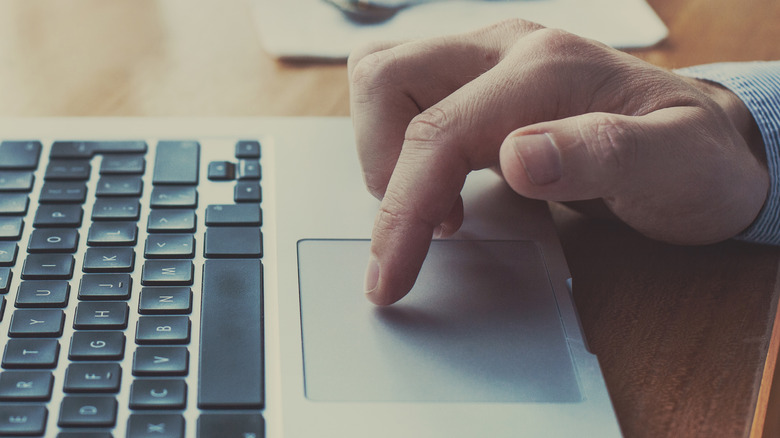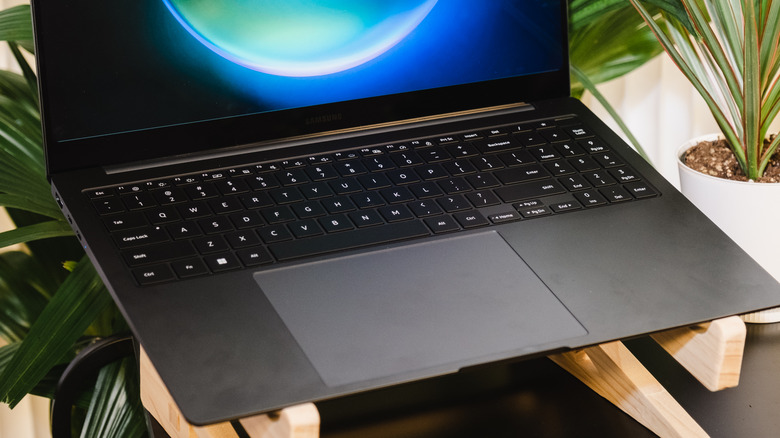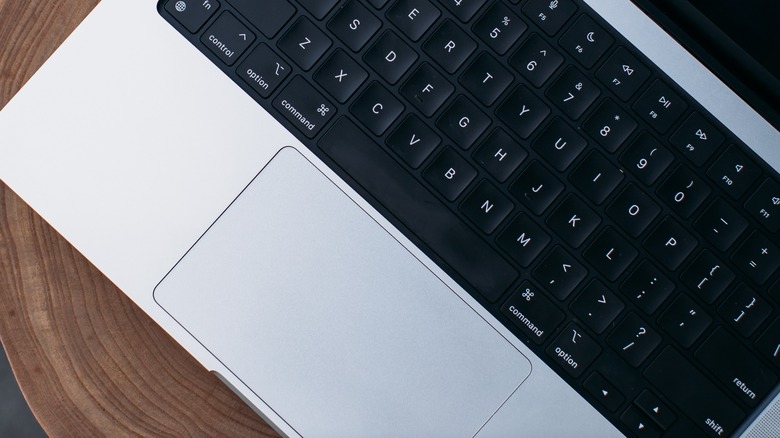What To Do If The Touchpad Isn't Working On Your Laptop
Generally speaking, the best way to control any personal computing device is a wired mouse. Of course, if you're using a laptop on the go, you may not have the space necessary for a mouse, assuming you even have one with you. Thankfully, you've always got your trusty touchpad to fall back on: it's not the most comfortable or efficient way to control your computer's pointer, but since it's part of the laptop, it's always available for you to use. At least, until it isn't.
While your laptop's touchpad may be integrated into its body, it is still technically a separate device, which means it can occasionally go on the fritz independent of the laptop itself. Depending on your situation, such as if you're on an airplane or other isolated location, this could prove potentially problematic. You'd do well to either remedy it as quickly as possible, or start lugging around a wired mouse with you.
Fixing the Touchpad on a Windows laptop
When it comes to Windows laptop touchpads, the name of the game is drivers. Assuming your laptop hasn't suffered some kind of critical hardware failure — an issue that would probably be swiftly apparent — then the problem is probably the mouse and pointer drivers. To repair drivers, there are two options to try.
First, try a driver update. If there is a problem with the pointer drivers, an update may remedy it. Note that this process is identical for both Windows 10 and Windows 11:
-
Type "Device Manager" into your Start menu search bar.
-
Open the Device Manager.
-
Expand the "Human Interface Devices" tab. Alternatively, expand the "Mice and other pointing devices" tab.
-
Find your trackpad on the list.
-
Right-click on your trackpad and click "Update driver."
The update wizard will automatically check for driver updates and, if available, will install them.
If the problem is more ingrained, you may need to perform a fresh installation of drivers.
-
Type "Device Manager" into your Start menu search bar.
-
Open the Device Manager.
-
Expand the "Human Interface Devices" or "Mice and other pointing devices" tab.
-
Find your trackpad on the list.
-
Right-click on your trackpad and click "Uninstall device."
-
Confirm the uninstall.
-
Restart your PC.
When you restart, Windows will automatically detect the missing driver and reinstall it, hopefully solving any touchpad problem in the process.
Fixing the Touchpad on a Mac laptop
If you're having problems with your Mac laptop touchpad, the cause may be in the internal settings. MacOS has several features for its touchpads that Windows devices don't have that are intended to give you a greater degree of control, but they can make things a bit more complicated by accident. If your touchpad isn't responding, disabling these features could be the solution.
-
Open the Apple menu.
-
Click System Settings.
-
In the System Settings sidebar, click "Trackpad."
-
Disable the "Ignore accidental trackpad input" option.
When this setting is disabled, your touchpad will receive whatever input you give it, even if you're using multiple fingers.
Alternatively, the problem may be that your Mac laptop is simply running low on power. Some low-power warnings are hidden from view when not plugged in, but when the battery is low, input devices may start to waver. Plug your laptop in and let it charge up for a while, and it may resolve any issues.
If the issue is not fixed, it is possible that your Mac laptop is experiencing a hardware failure, in which case you should take it to a licensed Apple repair center for service.


